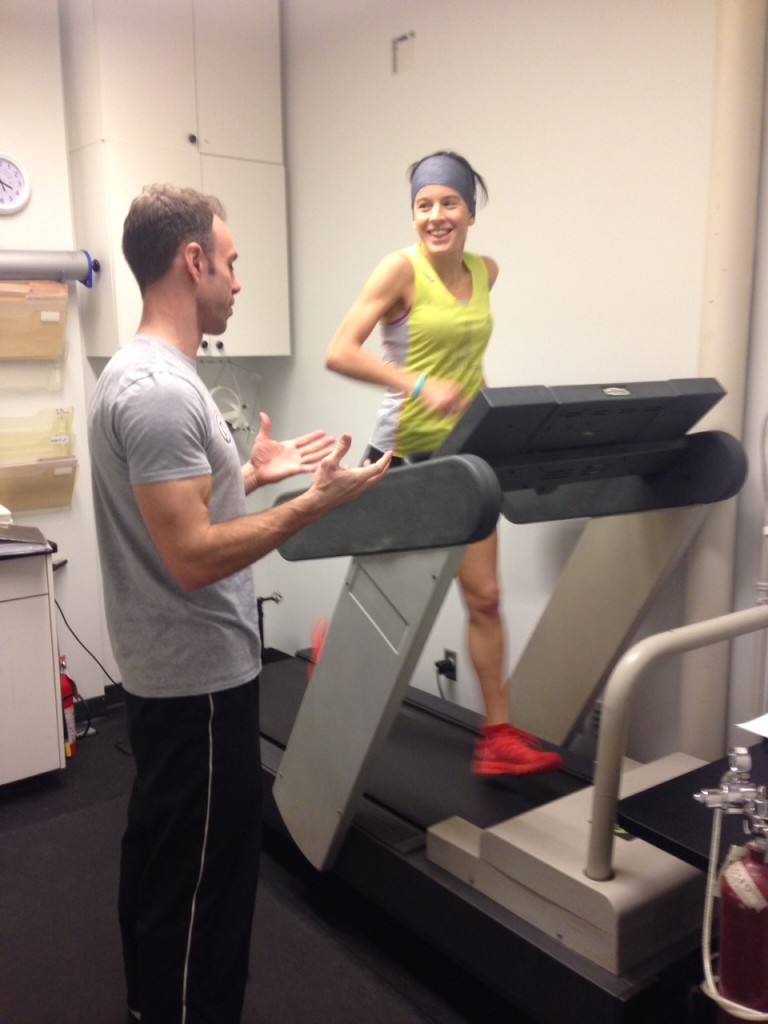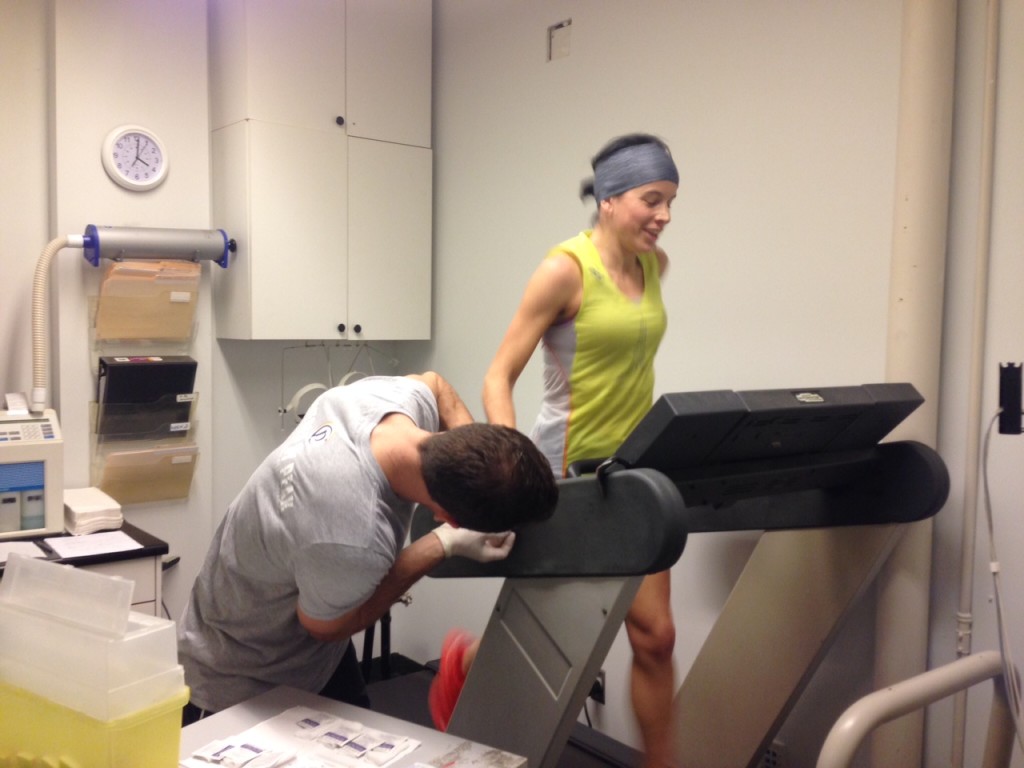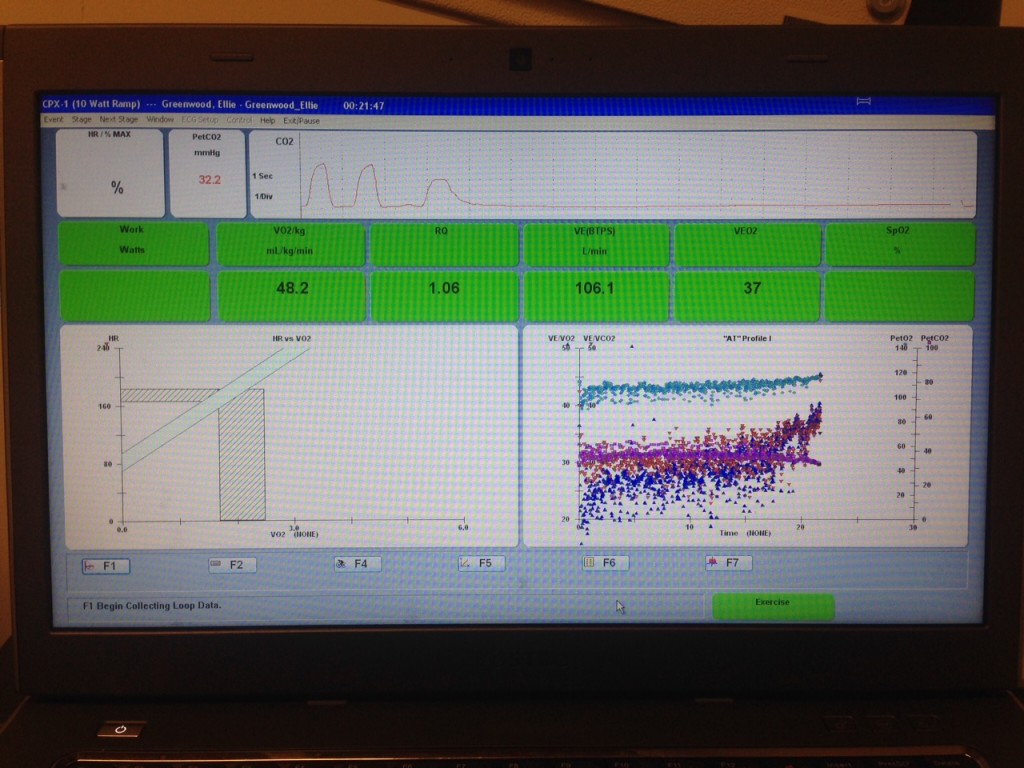Lactate testing with Peak Centre for Human Performance
I have always been a runner who likes to run very much on ‘feel’. Do I ‘feel’ like I am pushing the effort? Do I ‘feel’ like I can maintain this pace for this whole marathon? Do I ‘feel’ like I should be working harder on my hill repeats session? Yes, I have regularly run with a watch and in recent years of course, succumbed to the GPS watch craze. More often than not, I still head out the door and run at what seems like the correct effort for that day – whether it’s a long run, a recovery run, or an interval session. I enjoy looking at my routes and paces that my watch generated, but for the most part, my heart rate monitor stays at home. I have not used heart rate to quantify the effort level of my various runs; instead I’ve just listened to my body.
Last week, I got the chance to go see Lewis from Peak Centre for Human Performance for lactate testing. I jumped at the opportunity to learn more about my running from a scientific perspective. While I have had success with my running through a feel-based approach to training (perceived effort), it is always interesting to learn more about our bodies. Especially when trying to improve performance and achieve new running goals.

Why Lactate Testing?
Lactic testing determines our aerobic threshold, our lactate threshold and our speed at VO2max. Aerobic threshold and lactate threshold are most applicable to running performance.
When running, our bodies can either work aerobically (low intensity that in theory we can maintain all day) or can work anaerobically (higher intensities that we can only maintain for a limited period). Through the lactate testing process we can determine our various thresholds and five heart rate zones. These five heart rate zones can then be used to then guide our training in a very specific and tailored way.
Zone one is the zone where your heart rate is low enough that you can maintain the effort for a long period of time. Zone five is the zone where your heart rate is so high that you can only run at that intensity for a few minutes before you need to slow down. This is because in zone one your body can quickly clear out the lactate that your muscles produce, while in zone five the body cannot keep up with breaking down the volume of lactate and ultimately that build up of lactate forces you to stop running.
Regardless of the race distance, a runner will need to dedicate some weekly training in the different zones in order to continuously see improvements. This means getting the most bang for our training buck. It would seem logical that if we were training for an endurance event such as a marathon that we want to do a lot of our training in zone one since most of the marathon should be run in zone one. While a marathoner will need to do a lot of training in zone one, they should also train in the zone three to five. This is why during The Run Centre/ Kintec Half marathon and marathon clinics there are always track and hill repeat sessions. By training to run at a higher intensity in zone 5, you can increase your zone one range, which allows you to run a faster pace at a lower heart rate. Everyone’s zones are different and can be changed through training. However, unless you know what those personal zones are, it is difficult to effectively target those specific heart rate zones.
Lactate Testing
The actual process of the lactate test was very simple and Lewis made it as painless as possible, bearing in mind it does involve some hard effort running which is never painless! After a short warm up jog on the treadmill we got down to the test, which typically lasts 15 to 25 minutes. The test ends when you reach your point of exhaustion.

The test is split up into 3-minute segments at which the speed would be gradually increased. Towards the end of each 3-minute segment, Lewis would take a tiny pinprick of blood from my finger to be tested for the accumulation of lactate. Being a pretty determined person I hoped to make it close to the upper range of the 15 to 25 minute range he had mentioned for the likely test duration but after 21 minutes and 35 seconds and a fairly brisk pace on the treadmill, I reached my point of exhaustion. With the test completed, the analysis began.
The Fun Begins
The follow up session with Lewis was the really fun part as that is where I learnt how I could improve my training for maximal performance. Of course it is always easier to think that to be a better runner we just need to run more, but often it is about training not just harder but also smarter. We are all limited in our training capacity whether it is from work, family commitments or simply physical breakdown (injury). It was really interesting to learn that through maintaining the same volume of training but tweaking the type of training I do, I have the potential to make performance gains i.e. become a faster runner!

While this might all sound rather unnecessary for some of you who are new runners or run ‘for fun’, in fact lactate testing can be hugely beneficial for runners of all abilities. I think most of us harbor some sort of goals of becoming a ‘better’ runner, whether that is becoming faster or tackling longer distances, and through lactate testing we can find out how to do that most efficiently by learning how much of our training should be dedicated to certain heart rate zones. I have certainly come away from the test with a better understanding of the ‘why’ behind my training sessions and also how I can in theory improve my running fitness for the specific events that I am training for. It will be fun to go back for another lactate test in three months time to see if some of the training ideas that Lewis has suggested have indeed shifted my training zones and thus improved my running fitness.
Ellie Greenwood
The Run Centre / Kintec Half and Full Marathon Instructor
No Comments